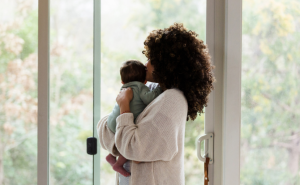
Baby Led Weaning Basics
What is baby led weaning? How can you introduce foods safely? And what are some of the benefits — and drawbacks — of this method?

What is baby led weaning? How can you introduce foods safely? And what are some of the benefits — and drawbacks — of this method?

You’ve heard the phrase, “It takes a village to raise a baby,” but how true is it?

Do all babies communicate the same way? How can parents use everyday communication experiences to bond? And how much does the way we communicate with our babies impact them later in life?

You are at your two week checkup after having your baby and you are being asked, “have you bonded with your baby?” For some women it’s an easy yes and for others the answer might be more difficult to articulate. Today we are diving in deep about the ways you can bond with your baby and what to do if you think you have not bonded with them yet.

Reading books to your baby can be great for bonding or setting the mood before bedtime, and research shows there are long-lasting effects of this simple routine. What types of books are best for babies? How should parents be reading? And what are some tips for raising readers?

Today we are diving more into baby milestones and how having baby playdates can be beneficial for your little one’s development!

Should I be concerned my baby doesn’t babble? Is it realistic to expect my baby to walk by one?

You’ve had a wonderful time at home getting to know your new baby. But now, it’s time to go back to work. You’re feeling a range of emotions – anxiety over returning to an inbox full of emails, mom guilt over leaving your baby at daycare for the first time, but simultaneously looking forward to feeling more like your old self. We’re breaking down all these emotions and more today to hopefully give you some peace of mind as you prepare for the transition. Plus, what rights you have as a new parent re-entering the workplace.

What are some simple steps you can take to eat healthier during this busy season of life?

There are all kinds of benefits to being bilingual, and parents who speak multiple languages may want to pass that knowledge on to their children. What are the best strategies for doing so? How important is it to start teaching your kids in infancy? And if you’re not bilingual, can you still raise bilingual children?